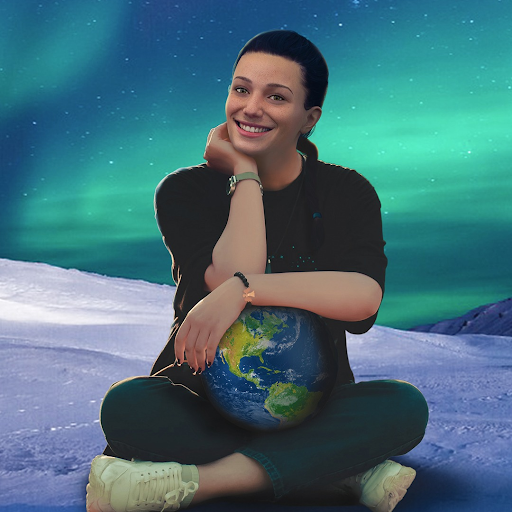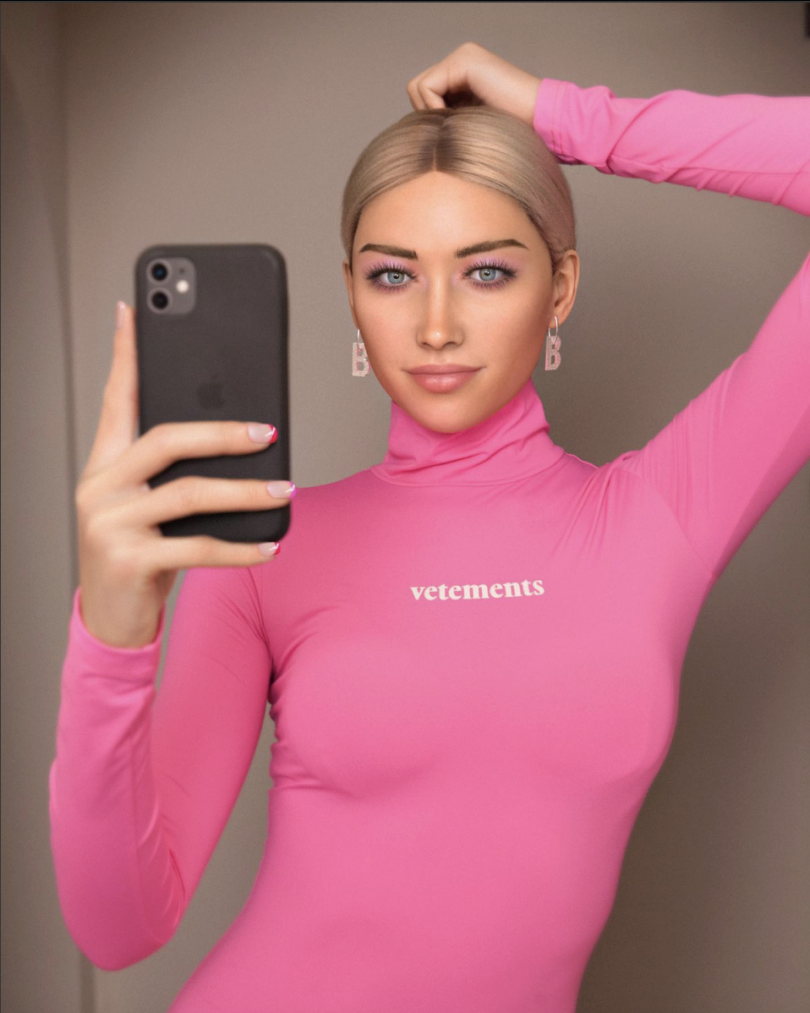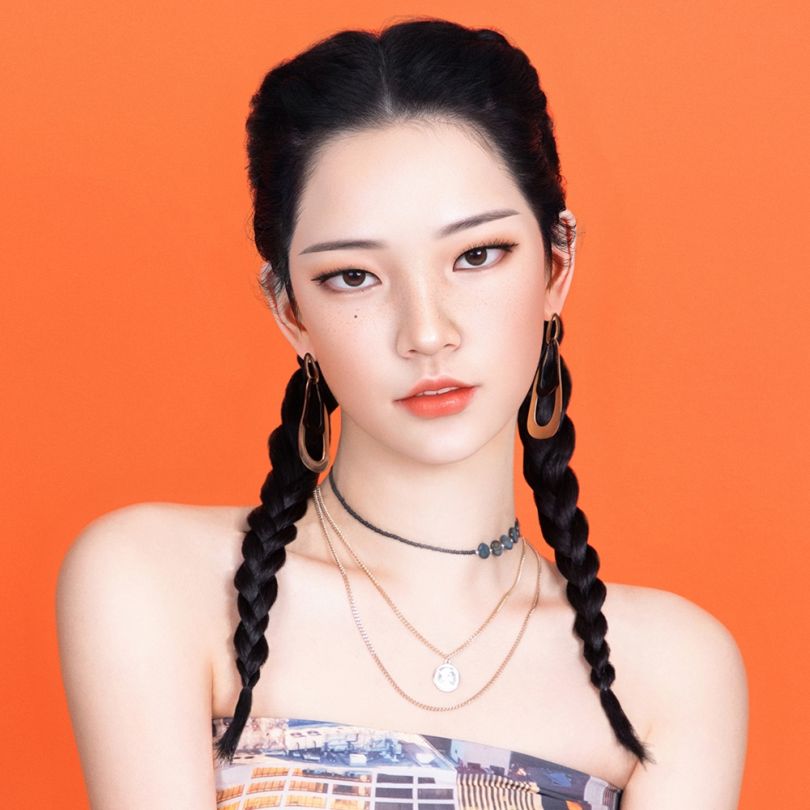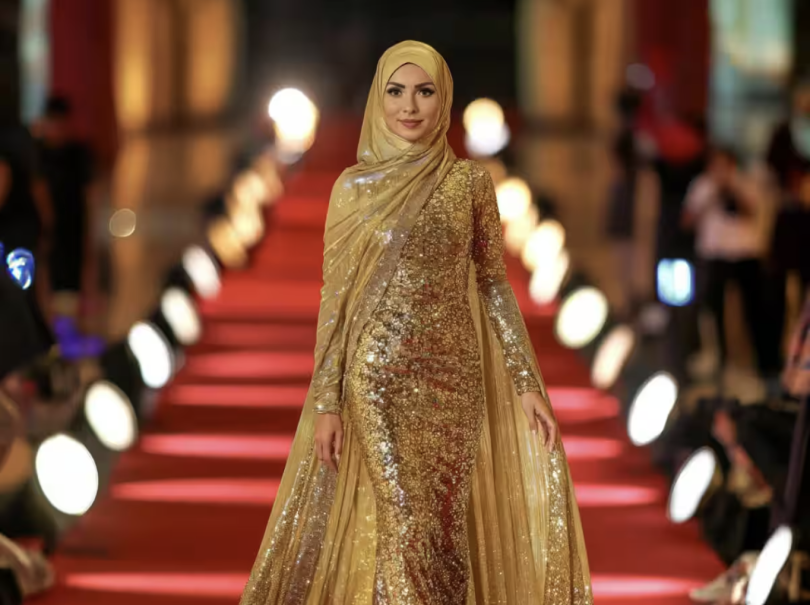Influencers have commanded social media for years, setting trends and guiding their followers’ shopping habits with the content they post — ultimately forging an industry worth more than $32 billion as of 2025. And the landscape is evolving quickly amid the rise of a new player: the AI influencer.
What Are AI Influencers?
AI influencers, also known as virtual influencers, are computer-generated characters that promote products on social media. Often created with CGI, motion capture and artificial intelligence, these digital personas are designed to behave the way a human influencer would online, offering brands a unique way to connect with consumers.
Among the most popular AI influencers is Lil Miquela, who has appeared in ads for fashion companies like Chanel and Givenchy, and who champions progressive politics when she’s not busy discussing what it’s like being a young robot living in Los Angeles. Another is Lu do Magalu — a creation of Brazilian big-box retailer Magazine Luiza — who has partnered with prominent brands like Adidas and Samsung, and even runs her own YouTube channel.
Blurring the lines between the real and virtual worlds, these AI influencers are transforming the way content is created, consumed and marketed. With millions of followers engaging with their content and purchasing the products they promote, they are innovative tools that brands can use to better connect with audiences in an increasingly saturated social media space.
What Are AI Influencers?
AI influencers are essentially the virtual version of human social media influencers. Interacting with the world from a first-person perspective, they post selfies, dance, attend events, comment on current events and even engage in public squabbles with each other. Some have also begun to put out their own music and host their own podcasts.
AI influencers come in all shapes and sizes, ranging from cartoonish 3D characters like noonoouri to photorealistic images like Aitana Lopez. Created using computer-generated imagery (CGI), motion capture technology, generative AI and other forms of artificial intelligence, these digital personas are typically managed by a team of people with the goal of landing brand deals.
They look and behave the way real people do online, but their appearance, personalities and content have been carefully designed to appeal to a specific audience — particularly Gen Z and Gen Alpha, who have grown up with social media and live a large part of their lives on it.
“Virtual influencers are appealing to this next generation of individuals who are already living in a digital world,” Ridhima Ahuja Kahn, VP of business development and partnership at Web3 company Dapper Labs, told Built In. “For them, whether someone’s real or not seems to be less important. What’s more important is which personality really resonates with them the most.”
Benefits of AI Influencers
AI influencers are blending cutting-edge technology with interesting new storytelling methods, making influencer marketing a more customizable, creative and cost-effective option.
Allow Brands More Creative Freedom
AI influencers are highly customizable. They aren’t limited by the confines of time, space or physics. Their creators can make them look and act however they want, and can make alterations with just a few lines of code.
“Miquela, for example, can be anywhere at any time,” said Kahn, whose company acquired Brud, the startup behind Lil Miquela, in 2021. “She can be in five places at once, speak to audiences in different languages and hop between fantasy and reality seamlessly.”
This flexibility allows brands to be much more creative with how their products are marketed, and lets them to push the boundaries of what is possible in their advertising.
Give Brands More Control Over Messaging
Because AI influencers are so customizable, brands have “a lot more control over what they say and do,” Ryan Offman, an AI engineer and head of science communications at deepfake detection company Deep Media, told Built In. Human influencers have their own feelings, perspectives and goals, which can cause them to create content in ways that don’t necessarily align with a brand’s vision. AI influencers only say and do what they are specifically programmed to say and do, and any mistakes can easily be erased.
This has become increasingly easy to do thanks to new tools rolled out by social media platforms themselves. For example, TikTok allows brands to create ads on the app using their own AI-generated influencers, offering both stock characters and customizable avatars that can be modified and dubbed in multiple languages.
With AI influencers, brands can “dictate what the content is going to look like, what it’s going to say, how it’s going to be placed,” Alison Bringé, the chief marketing officer at marketing analytics company Launchmetrics, told Built In. “They’re a little less at the mercy of someone else.”
This is beneficial from a brand-safety perspective. Human influencers can change their minds, or say the wrong thing, or get caught up in a scandal that could potentially be damaging to a brand’s reputation. Because their personalities and content are so carefully controlled, influencers are less likely to be involved in controversies (though they’re not completely immune).
“You never know what can happen in the real world with an individual,” Kahn said. “There’s a level of security and safety that comes with working with the right virtual influencers.”
Cost Less Than Human Influencers
While the cost of working with them varies widely, AI influencers tend to be less expensive than their human counterparts with similar following sizes. A human influencer with a million or more followers might charge a brand upwards of $250,000 per post, according to a 2024 Harvard Business Review report. Meanwhile Lil Miquela — who has millions of Instagram followers — charges around $9,000. At the end of the day, though, cost largely depends on the popularity of the influencer and the particular job.
Easier to Scale
Brands can easily create multiple virtual influencers that target specific demographics and markets. And those influencers can create content and engage with followers around the clock, which isn’t true of human influencers.
“There aren’t human rights laws, there aren’t constraints on how many hours they can work,” Sienna Santer, a creator strategist at marketing agency Buttermilk, told Built In. “The content can be delivered a lot faster, and you can get exactly what you want from an AI influencer because they have no creative say. It’s really just a matter of changing code, and not dealing with a human.”
Stand Out in a Saturated Market
Social media is inundated with content. According to 2024 statistics, more than 1 billion photos are posted on Instagram every day, and more than 270 videos are posted on TikTok every second. For brands looking to promote their products on these platforms, standing out is a matter of survival — and partnering with AI influencers is one way of doing that.
“Brands need to think outside the box with how they connect with consumers,” Bringé said. “These influencers are fulfilling this need to kind of create that connection with the customer in different areas, to tell different stories and to push them through that funnel.”
This strategy is also backed by research. One study in the European Journal of Marketing found that consumers were just as likely to follow an AI influencer as a human influencer. It also found that consumers were more likely to speak with others about the AI influencer, making them an effective tool for brands to generate buzz. Another study done by Meta found that when clothing retailer H&M used a virtual influencer named Kuki in an ad campaign, it resulted in an “11x increase in ad recall” — people who remember seeing the ad — over “ads with campaign video only.”
Drawbacks of AI Influencers
Most marketing experts say that social media users crave authenticity, especially younger users. How exactly you define “authentic” is up for debate, but the ultra-curated, picture-perfect world of these virtual characters does not appear to be it. The obvious artificiality of AI influencers can have several negative ethical and societal drawbacks.
Lack the Human Experience
Young consumers use social media more as a search engine than a place to merely connect with each other. They look to influencers to figure out what to wear, where to travel, what political causes to care about and so much more.
Input from AI influencers — amalgamations of pixels and code that have no real understanding of what it means to be alive, or stake in current events — can come off as disingenuous and shallow. After all, what does an AI-generated cartoon promoting makeup possibly know about skincare? How could a digital fabrication of a Black person fully grasp the meaning of “Black lives matter”?
“Living as a human is very hard to replicate,” Santer said. “That instant connection we feel with somebody who’s going through the same lived experience as us can’t really be replicated by AI influencers to the same extent.”
More Difficult for Consumers to Trust
The problem of authenticity can be especially thorny if it is unclear whether an influencer is, in fact, real. Virtual influencers like Shudu and Rozy make it very clear on their social media platforms that they are digital, yet both of them have been mistaken for real people before. And plenty of other realistic-looking characters are not as transparent. As generative AI grows in sophistication, it will likely become increasingly difficult to distinguish between what is real and what isn’t online.
Labeling content as AI-generated and fully disclosing when an influencer is AI-generated or powered is important, Offman said, particularly as a way of stopping the spread of disinformation and facilitating trust with social media users.
It is also becoming mandatory. For example, the EU’s AI Act mandates clear disclosure of AI-generated content. And social media platforms like TikTok and Instagram have begun requiring that all AI-generated content be labeled as such.
May Objectify Women and People of Color
Most of the top AI influencers today are young, thin and female. And many are objectified as sexual commodities. Now, people are concerned that harmful gender stereotypes and unrealistic beauty standards perpetuated by these personas could have a negative effect on children, teens and adults.
These concerns are even greater for women of color, whom many of the most prominent influencers are modeled after. For example, Shudu’s thin frame, dark complexion and symmetrical features were inspired by the Princess of South Africa Barbie doll, and have been called a “white man’s digital projection of real-life Black womanhood.”
Francesca Sobande, a writer and senior lecturer in digital media studies at Cardiff University, argues that use of Black and multiracial women’s “physical appearance and embodiment” as fodder for the creation of virtual influencers is the latest example of an ongoing “commodification of Blackness” in consumer culture, where Black people are objectified and trivialized in the name of corporate profit.
Creating and working with these influencers allows brands to “try to position themselves in close proximity to Blackness, without having to meaningfully engage with, work with, credit, and/or support Black people,” she told Built In. “The [AI influencer] world is ripe with the potential to be portrayed as diverse, inclusive, and equitable, while masking and reinforcing oppressive power, gender and racial regimes.”
How Do AI Influencers Work?
No two AI influencers are alike. While some are created using sophisticated CGI and photo-editing tools, others are made with a simple image generator. Some have real people writing every Instagram caption, while others use AI to communicate with their followers directly in real-time, learning from those interactions to be more engaging in the future.
No matter what technology is used to make them, the process of maintaining success as an AI influencer is fairly similar to that of a human influencer, according to Bringé. They cultivate a persona — core values, goals, a sense of humor — that followers and brands can align themselves with. And they build legitimacy by posting lots of content on a regular schedule, and spreading that content through different social media platforms, depending on its format and purpose.
“The most successful influencers have a team of people that work behind the persona — that come up with the ideas, pitch the campaigns and then make sure those campaigns are successful,” Bringé said. “And then everyone gets paid.”
AI influencers promote products either through their own social media pages or by appearing in ads on the brands’ channels, functioning as something between a spokesmodel and mascot. Brands are also making their own AI influencers, which gives them the ability to to customize the appearance, actions and speech of these digital ambassadors to their exact specifications.
Now, the rapid advancements in generative AI are propelling the AI influencer industry to new heights. With the ability to create unique text, images, music and entire videos in a matter of seconds, making a fully fledged digital persona has never been easier. And more are being added on social media every day.
10 Popular AI Influencers

1. Lu do Magalu
Lu do Magalu, or Lu of Magalu, was originally created in 2003 by Magazine Luiza, one of Brazil’s largest big-box retailers, to serve as an assistant on its e-commerce website. But over time her role has expanded. Now, the AI influencer gets her own write-up in the company’s annual report, gives interviews and maintains a robust social media presence. With more than 8 million followers on Instagram alone, Lu is among Brazil’s most-followed influencers and has one of the fastest-growing TikTok accounts in the world.
Lu has also appeared on television shows like Dança dos Famosos (Dancing with the Stars), runs her own YouTube channel and partners with some of the world’s biggest brands, including Adidas and Samsung. She also became the first AI influencer to make the cover of Vogue Brasil, one of the most prominent fashion magazines in the world.
- Instagram handle: @magazineluiza
- Instagram followers: 8+ million
- Creator: Magazine Luiza (2003)

2. Lil Miquela
With over 2 million followers on Instagram and over 3 million followers on TikTok, Miquela Sousa, aka Lil Miquela, is one of the most popular virtual influencers. She was named one of Time Magazine’s 25 Most Influential People on the Internet in 2018 and has worked with Givenchy, Calvin Klein, Chanel and other fashion brands. She has even become a celebrity in her own right, posing with human stars like Rosalía, Millie Bobby Brown and Nile Rodgers in pictures.
Created in 2016 by AI company Brud, Lil Miquela’s social media pages offer a detailed fictional narrative of a 22-year-old robot living in Los Angeles. In addition to being featured in various product endorsements, she often champions progressive politics and discusses the struggles of having a sense of ownership over her life despite being a digital persona.
- Instagram handle: @lilmiquela
- Instagram followers: 2+ million
- Creator: Brud (2016)

3. Aitana López
Aitana López is a 26-year-old, Barcelona-born “digital muse who breaks barriers and redefines reality” — according to her profile on The Clueless, the Barcelona-based design agency that created her.
Named as Spain’s first 100-percent AI-generated influencer, Aitana is known for her seductive and bold persona across all of her social media channels, where she models outfits from brands like Victoria’s Secret, Brandy Melville and Guess. Her AI-generated photos are known to be so realistic that even celebrities have reportedly slid into her DMs thinking she’s a real person.
- Instagram handle: @fit_aitana
- Instagram followers: 300,000+
- Creator: The Clueless (2023)

4. IMMA
Known for her bubblegum-pink bob, Imma is the first AI influencer in Japan. Her social media pages feature photos of her exploring Tokyo, posing with other influencers (both virtual and human) and videos of her digital dog Einstein. She also discusses issues like gender, race and climate change.
Created by Tokyo-based CGI company ModelingCafe, Imma has collaborated with brands like IKEA, Dior, Nike and Coach alongside rapper Lil Nas X. She also launched her own fashion brand, Astral Body, selling real clothing items that resemble her style. In 2020, Imma participated in the closing ceremony for the 2020 Tokyo Paralympic Games.
- Instagram handle: @imma.gram
- Instagram followers: 300,000+
- Creator: ModelingCafe (2018)

5. Noonoouri
Created by German graphic designer Joerg Zuber, noonoouri has been featured in ad campaigns for fashion giants like Dior, Valentino and Balenciaga. She has also forged a successful music career, becoming the first virtual influencer to get a deal with Warner Music, one of the biggest record labels in the world.
Noonoouri’s first single, “Dominoes,” was a collaborative effort with Warner, German DJ Alle Farben and a team of creatives, songwriters and musicians. And her singing voice was rendered using generative AI, which was trained using the voices of real singers. At the time of reporting, the music video has garnered more than 290,000 views on YouTube since its release in September 2023.
- Instagram handle: @noonoouri
- Instagram followers: 400,000+
- Creator: Joerg Zuber (2018)

6. Shudu
Shudu is touted as the world’s first digital supermodel. With a strong presence in editorial and sponsored fashion photography, she has worked with luxury fashion brands like Karl Lagerfeld and Louis Vuitton. She also collaborated with BMW to promote the car maker’s new Freude Forever magazine. Boasting more than 230,000 followers, Shudu’s Instagram features hyper-realistic images of her posing in 3D garments, in digital concept cars and with other models (both real and virtual).
Shudu was created by British fashion photographer Cameron-James Wilson, who was commissioned by fashion label Balmain to design a “diverse mix” of digital models called the Diigitals.
- Instagram handle: @shudu.gram
- Instagram followers: 200,000+
- Creator: Balmain and Cameron-James Wilson (2017)

7. Leya Love
Leya Love, an “ambassador for Planet Earth,” is an AI influencer created by Cosmiq Universe AG whose persona centers on environmental advocacy, emotional connection and positive living. Her content is less about fashion or commercial aesthetics, and more about natural sustainability and wellness.
Leya Love has co-authored the book Women’s Power - Living Your Values to the Fullest: ... When Dreams Come True! and appeared as a virtual speaker at the United Nations Global Youth Summit in 2021.
- Instagram handle: @leyalovenature
- Instagram followers: 500,000+
- Creator: Cosmiq Universe AG (2020)

8. Bermuda
Bermuda is a bold and historically controversial AI influencer created by Los Angeles-based Brud. She gained prominence following a staged feud with fellow virtual influencer Lil Miquela (also created by Brud) in 2018, where she “hacked” Lil Miquela’s Instagram account and replaced many of the influencer’s photos with her own. Unlike many AI influencers, Bermuda has also leaned into political provocation, making her one of the more polarizing figures in the space.
Bermuda has advertised for brands like Chanel, Balenciaga, Tesla and Starbucks.
- Instagram handle: @bermudaisbae
- Instagram followers: 200,000+
- Creator: Brud (2016)

9. Rozy
Rozy or Oh Rozy, meaning “the one and only” in Korean, states herself as South Korea’s first virtual influencer. Created by Sidus Studio X, Rozy is designed for those with lifestyle, fashion and music interests, often posting content like travel images, style shots and creative visuals to showcase her persona.
Rozy presents herself as a singer, model, DJ artist and environmental advocate, and has worked with brands such as Tiffany & Co and Calvin Klein. By using AI voice technology developed by Naver, Rozy also appeared on a South Korean radio program in 2022, making her the first AI character to do so in the country.
- Instagram handle: @rozy.gram
- Instagram followers: 100,000+
- Creator: Sidus Studio X (2020)

10. Kenza Layli
Kenza Layli is a Moroccan-origin AI influencer who gained popularity by winning the Miss AI 2024 competition at the World AI Creator Awards, making her the world’s first AI beauty pageant winner. Created by Casablanca-based Phoenix AI, Kenza Layli positions herself as a representative of diversity and inclusivity within the AI creator sphere, particularly as a virtual voice for women in Morocco and the Middle East.
Kenza Layli’s content focuses on high-fashion, lifestyle and travel aesthetics. She has advertised for brands such as Hyundai and Bioderma.
- Instagram handle: @kenza.layli
- Instagram followers: 100,000+
- Creator: Phoenix AI (2023)
Will AI Influencers Replace Human Influencers?
Like them or not, AI influencers are probably here to stay. But, at least for now, their relationship with human influencers seems poised more for coexistence than total replacement. Although it is really good at mimicking human emotion, humor and creativity, artificial intelligence is not sentient. It cannot connect with or relate to people the way a real person can.
So, the uniquely human ability to empathize, adapt and understand the real world will continue to set human influencers apart from their digital counterparts, Santer said. “The human experience is something that won’t be able to be replaced by technology itself.”
Frequently Asked Questions
What is an AI influencer?
AI influencers, or virtual influencers, are computer-generated characters that exist on social media, engaging with their followers and promoting products or brands. These digital personas are carefully crafted to look and act the way a human influencer would.
What is an example of an AI influencer?
A popular example of an AI influencer is noonoouri, a 3D cartoon girl.
Noonoouri has been featured in ad campaigns for fashion brands like Dior, Valentino and Balenciaga, and has forged a successful music career.
In 2023, noonoouri became the first-ever virtual influencer to get a deal with Warner Music, one of the biggest record labels in the world. Noonoouri’s first single, “Dominoes,” was a collaborative effort with Warner, German DJ Alle Farben and a team of creatives, songwriters and musicians, while her singing voice was rendered using generative AI.
What brands are using AI influencers?
Brands ranging from Dior to IKEA to Domino's Pizza have used AI influencers in their advertising. Some of the more famous ad campaigns include one for Coach, where the character Imma appeared alongside rapper Lil Nas X; and one for Calvin Klein, where the character Lil Miquela kissed fashion model Bella Hadid.
Who is the most popular AI influencer?
Lu do Magalu and Lil Miquela are some of the most popular AI influencers in the world, with both having millions of followers on Instagram and TikTok.
Do AI influencers make money?
Yes, AI influencers can make money through:
- Brand sponsorships
- Affiliate marketing partnerships and product promotion
- Advertising revenue
- Paid subscriptions on YouTube, X, Twitch, Patreon or other subscription-based platforms
- Fan gifts and donations
How can I make an AI influencer?
Making an AI influencer can be done with the following steps:
- Determine the target audience and market for your AI influencer.
- Design your AI influencer’s character and persona.
- Use CGI and photo-editing tools or AI image generators to create your AI influencer.
- Set up and manage social media profiles for your AI influencer.
- Create social media content relevant to your influencer’s persona and maintain audience engagement.




